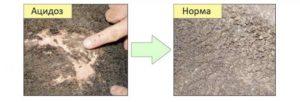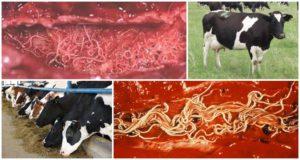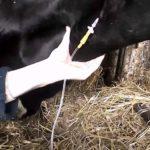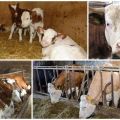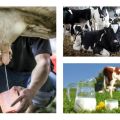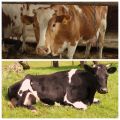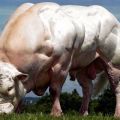How to raise a cow without a winch after laying down, symptoms and treatment
Stagnation (paresis) is a disease when an animal cannot stand on its own feet. This is due to a decrease in calcium in the blood, which causes weakening of the motor functions of the musculoskeletal system. Postpartum paresis is common among cows and accounts for approximately 10% of calving. In order to know how to properly raise a cow after laying down without a winch, you need to understand the reasons for this phenomenon.
Reasons for stagnation
Pregnancy and childbirth affect the animal's body. Hedging begins both a few days or weeks before delivery, and after. In cows preparing to produce offspring in the summer, prenatal laying is a rare occurrence. Basically, cows that are ready to calve at the end of winter are susceptible to prenatal laying. If a cow is lying down before giving birth, then after calving, most likely, it will not stand up.
Lying before giving birth is due to several reasons:
- unbalanced and insufficient feeding during pregnancy;
- lack of walks;
- insufficient space that limits the activity of the animal;
- smooth, sloping floor;
- crowded content with poor ventilation and sewage;
- a large fetus that squeezes the nerve plexuses;
- inflammatory diseases: arthritis and myositis;
- hypothermia of the body.
It happens that a cow spent the entire pregnancy on her feet, but after calving she cannot get up for a long time. This phenomenon is called postpartum deposition, which is caused by:
- hypocalcemia;
- fracture of the pelvic bones during childbirth;
- injury in the first hours, when the cow does not understand what is happening to her and tries to get up, injuring herself and damaging her ligaments;
- tear of soft tissue fibers;
- pinched nerves;
- compression of the sciatic and obturator nerves (pinching);
- difficult childbirth;
- unqualified assistance in the delivery of a large calf.

If the cow does not rise after giving birth, but looks healthy, takes feed, then this is due to a weakening of the musculoskeletal system.
Symptoms of the problem
There are two types of stagnation in pregnant cows:
- gradual - signs appear in stages: unsteady gait, staggering, when walking "drags" the back of the body, rises with difficulty, legs give way. The animal rises less often, and then does not rise at all, does not respond to commands;
- sharp - the cow slipped on the slippery floor and fell. At first he tries to get up, but then he stops doing it.
Stagnation symptoms:
- body temperature within 36.5-39.0 ° C;
- pulse - 40 beats per minute;
- breathing is calm;
- the digestive system is normal;
- the sensitivity of body parts remains;
- the genitourinary organs function without interruption.
Staying too long before calving will lead to pressure ulcers, if not properly maintained, and digestive problems.
Diagnostic methods
To diagnose the causes of stagnation, two methods of initial examination are used: visual examination and physical examination.
Initial examination includes:
- general behavior of the animal;
- the presence of appetite;
- pay attention to breathing: deep and smooth or difficult with wheezing;
- assessment of the skin;
- examination of the abdominal cavity, genitourinary organs, perineum;
- palpation.
After the examination, the veterinarian will confirm or deny the fact of traumatic bedding. In the absence of serious injury, the cow will begin to rise in 3-14 days.
If the cow does not rise after two weeks, it is the result of serious health problems. The veterinarian will conduct an examination, diagnose and prescribe treatment for the diagnosed disease. As a rule, accumulation begins due to hypocalcemia (a decrease in calcium levels, changes in the level of phosphorus, magnesium and vitamin D3 in the blood).
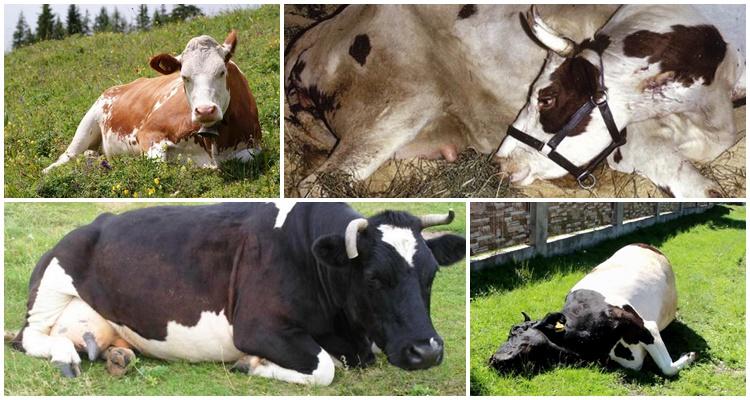
Depending on the level of calcium fall in the blood, the form of the course of hypocalcemia differs:
- subclinical - slight muscle hypothymia occurs, which does not manifest itself on the musculoskeletal system;
- light - the animal walks with difficulty, staggers;
- medium - the cow falls ill and cannot get up on its own;
- heavy - completely motionless, does not respond to stimuli.
Before starting treatment, blood should be taken for biochemical analysis. Based on the test results, a treatment regimen is determined.
Ways to cure postpartum deposition
To lay down without complications, a number of complex measures are used to independently raise the cow to its feet.
Intravenous and intramuscular injections
Treatment for paresis should be carried out after consulting a veterinarian who will prescribe a therapy regimen.
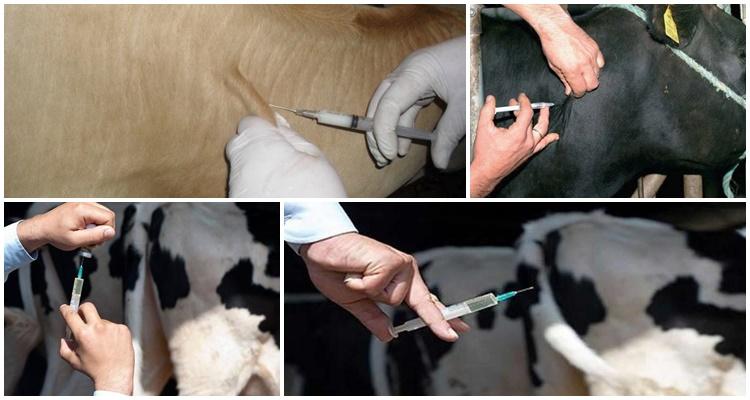
When storing a medium form, the following treatment is recommended:
- 20 ml of caffeine is injected subcutaneously behind the scapula.
- Calcium chloride 10% and calcium gluconate 20% or a complex preparation "Brovaglyukin", which contains calcium gluconate, magnesium, phosphorus and choline, are injected intravenously. The dose is calculated as 10 ml for every 10 kg of body weight.
- With a lack of glucose in the blood, inject 40% glucose in a volume of 400 ml into the vein.
- Next, the drug for injection "Catosal" (analogue - "Fos-Bevit") is injected, which is indicated for postpartum retention and hypocalcemia at a dosage of 25 ml.
Preparations should be warmed up to room temperature before use. After such a set of measures, 90% of cows rise within an hour after the procedure. In severe cases of stagnation, antibiotics are prescribed. Before treating your pet, you need to consult a veterinarian.
Turn over and lift slightly
If the animal lies motionless for a long time, and hygienic measures for care are not followed, then bedsores will appear. The death of soft tissue occurs due to impaired blood circulation and physical pressure. To avoid necrosis, the cow is turned over at least 3 times a day. You can lift the cow using the ropes. You need to circle the rope or rope by the lower part of the body.

Comfortable conditions of detention
A sick cow needs to be provided with comfortable conditions, put a soft, clean bedding.The room should be well ventilated with fresh air, dry and warm.
Rub back to improve circulation
To improve blood circulation, the back of the body is rubbed with camphor oil or 2% mustard alcohol. Camphor oil has the following beneficial properties:
- eliminates nervous tension in the muscles;
- creates an anti-inflammatory effect;
- has an antiseptic effect;
- nourishes the skin and improves tissue healing;
- has an analgesic effect.
The action of mustard alcohol is aimed at relieving the inflammatory process of the connective tissue.
Compresses are applied in the morning and in the evening in the region of the sacrum, for this you need to raise the cow a little.
How to prevent such problems
To prevent relapses, so that the cow does not fall ill again, feed tricalcium phosphate is introduced into the diet, 200 g per day - in the morning and evening, 100 g for a month. The drug "Catosal" is administered for 3 days. The cow needs to be provided with good housing conditions, it cannot be limited in food and drink.
In most cases, if a cow has paresis once, then this phenomenon will repeat during subsequent births. Older individuals tend to lodge. If a cow has had several postpartum paresis, then prenatal paresis is likely in the future. During such a period, the animal needs to be provided with veterinary care.
